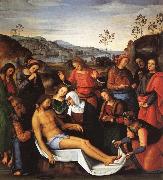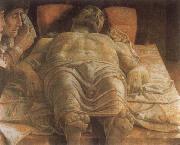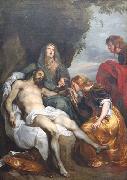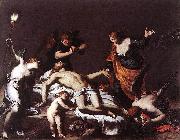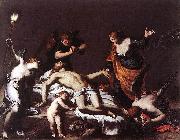Wholesale Oil Painting No Minimum |
|||||||||||
|
|
|||||||||||

|
|||||||||||
|
|
|
||||||||
PERUGINO, PietroItalian painter, Umbrian school (b. 1450, Citta della Pieve, d. 1523, Perugia). Italian painter and draughtsman. He was active in Perugia, Florence and Rome in the late 15th century and early 16th. Although he is now known mainly as the teacher of Raphael, he made a significant contribution to the development of painting from the style of the Early Renaissance to the High Renaissance. The compositional model he introduced, combining the Florentine figural style with an Umbrian use of structure and space, |
||||||||
|
|
||||||||
The Lamentation over the Dead Christ
The Lamentation over the Dead Christ Painting ID:: 29787 |
mk67
Oil on panel
84 1/4x76 3/4in
mk67 Oil on panel 84 1/4x76 3/4in |
|||||||
|
|
||||||||
Andrea MantegnaItalian 1431-1506 Andrea Mantegna Locations Mantegna was born in Isola di Carturo, close to Padua in the Republic of Venice, second son of a carpenter, Biagio. At the age of eleven he became the apprentice of Francesco Squarcione, Paduan painter. Squarcione, whose original vocation was tailoring, appears to have had a remarkable enthusiasm for ancient art, and a faculty for acting. Like his famous compatriot Petrarca, Squarcione was something of a fanatic for ancient Rome: he travelled in Italy, and perhaps Greece, amassing antique statues, reliefs, vases, etc., forming a collection of such works, then making drawings from them himself, and throwing open his stores for others to study. All the while, he continued undertaking works on commission for which his pupils no less than himself were made available. San Zeno Altarpiece, (left panel), 1457-60; San Zeno, VeronaAs many as 137 painters and pictorial students passed through Squarcine's school, which had been established towards 1440 and which became famous all over Italy. Padua was attractive for artists coming not only from Veneto but also from Tuscany, such as Paolo Uccello, Filippo Lippi and Donatello. Mantegna's early career was shaped indeed by impressions of Florentine works. At the time, Mantegna was said to be a favorite pupil; Squarcione taught him the Latin language, and instructed him to study fragments of Roman sculpture. The master also preferred forced perspective, the lingering results of which may account for some Mantegna's later innovations. However, at the age of seventeen, Mantegna separated himself from Squarcione. He later claimed that Squarcione had profited from his work without paying the rights. His first work, now lost, was an altarpiece for the church of Santa Sofia in 1448. The same year Mantegna was called, together with Nicol?? Pizolo, to work with a large group of painters entrusted with the decoration of the Ovetari Chapel in the apse of the church of Eremitani. It is probable, however, that before this time some of the pupils of Squarcione, including Mantegna, had already begun the series of frescoes in the chapel of S. Cristoforo, in the church of Sant'Agostino degli Eremitani, today considered his masterpiece. After a series of coincidences, Mantegna finished most of the work alone, though Ansuino, who collaborated with Mantegna in the Ovetari Chapel, brought his style in the Forl?? school of painting. The now censorious Squarcione carped about the earlier works of this series, illustrating the life of St James; he said the figures were like men of stone, and had better have been colored stone-color at once. This series was almost entirely lost in the 1944 Allied bombings of Padua. The most dramatic work of the fresco cycle was the work set in the worm's-eye view perspective, St. James Led to His Execution. (For an example of Mantegna's use of a lowered view point, see the image at right of Saints Peter and Paul; though much less dramatic in its perspective that the St. James picture, the San Zeno altarpiece was done shortly after the St. James cycle was finished, and uses many of the same techniques, including the classicizing architectural structure.) San Luca Altarpiece, 1453; Tempera on panel; Pinacoteca di Brera, MilanThe sketch of the St. Stephen fresco survived and is the earliest known preliminary sketch which still exists to compare to the corresponding fresco. Despite the authentic look of the monument, it is not a copy of any known Roman structure. Mantegna also adopted the wet drapery patterns of the Romans, who derived the form from the Greek invention, for the clothing of his figures, although the tense figures and interactions are derived from Donatello. The drawing shows proof that nude figures were used in the conception of works during the Early Renaissance. In the preliminary sketch, the perspective is less developed and closer to a more average viewpoint however. Among the other early Mantegna frescoes are the two saints over the entrance porch of the church of Sant'Antonio in Padua, 1452, and an altarpiece of St. Luke and other saints (at left) for the church of S. Giustina, now in the Brera Gallery in Milan (1453). As the young artist progressed in his work, he came under the influence of Jacopo Bellini, father of the celebrated painters Giovanni and Gentile, and of a daughter Nicolosia. In 1453 Jacopo consented to a marriage between Nicolosia to Mantegna in marriage. |
||||||||
|
|
||||||||
|
|
The Lamentation over the Dead Christ
The Lamentation over the Dead Christ Painting ID:: 40263 |
mk156
c.1490
Tempera on canvas
68x81cm
mk156 c.1490 Tempera on canvas 68x81cm |
||||||
|
|
||||||||
Andrea MantegnaItalian 1431-1506 Andrea Mantegna Locations Mantegna was born in Isola di Carturo, close to Padua in the Republic of Venice, second son of a carpenter, Biagio. At the age of eleven he became the apprentice of Francesco Squarcione, Paduan painter. Squarcione, whose original vocation was tailoring, appears to have had a remarkable enthusiasm for ancient art, and a faculty for acting. Like his famous compatriot Petrarca, Squarcione was something of a fanatic for ancient Rome: he travelled in Italy, and perhaps Greece, amassing antique statues, reliefs, vases, etc., forming a collection of such works, then making drawings from them himself, and throwing open his stores for others to study. All the while, he continued undertaking works on commission for which his pupils no less than himself were made available. San Zeno Altarpiece, (left panel), 1457-60; San Zeno, VeronaAs many as 137 painters and pictorial students passed through Squarcine's school, which had been established towards 1440 and which became famous all over Italy. Padua was attractive for artists coming not only from Veneto but also from Tuscany, such as Paolo Uccello, Filippo Lippi and Donatello. Mantegna's early career was shaped indeed by impressions of Florentine works. At the time, Mantegna was said to be a favorite pupil; Squarcione taught him the Latin language, and instructed him to study fragments of Roman sculpture. The master also preferred forced perspective, the lingering results of which may account for some Mantegna's later innovations. However, at the age of seventeen, Mantegna separated himself from Squarcione. He later claimed that Squarcione had profited from his work without paying the rights. His first work, now lost, was an altarpiece for the church of Santa Sofia in 1448. The same year Mantegna was called, together with Nicol?? Pizolo, to work with a large group of painters entrusted with the decoration of the Ovetari Chapel in the apse of the church of Eremitani. It is probable, however, that before this time some of the pupils of Squarcione, including Mantegna, had already begun the series of frescoes in the chapel of S. Cristoforo, in the church of Sant'Agostino degli Eremitani, today considered his masterpiece. After a series of coincidences, Mantegna finished most of the work alone, though Ansuino, who collaborated with Mantegna in the Ovetari Chapel, brought his style in the Forl?? school of painting. The now censorious Squarcione carped about the earlier works of this series, illustrating the life of St James; he said the figures were like men of stone, and had better have been colored stone-color at once. This series was almost entirely lost in the 1944 Allied bombings of Padua. The most dramatic work of the fresco cycle was the work set in the worm's-eye view perspective, St. James Led to His Execution. (For an example of Mantegna's use of a lowered view point, see the image at right of Saints Peter and Paul; though much less dramatic in its perspective that the St. James picture, the San Zeno altarpiece was done shortly after the St. James cycle was finished, and uses many of the same techniques, including the classicizing architectural structure.) San Luca Altarpiece, 1453; Tempera on panel; Pinacoteca di Brera, MilanThe sketch of the St. Stephen fresco survived and is the earliest known preliminary sketch which still exists to compare to the corresponding fresco. Despite the authentic look of the monument, it is not a copy of any known Roman structure. Mantegna also adopted the wet drapery patterns of the Romans, who derived the form from the Greek invention, for the clothing of his figures, although the tense figures and interactions are derived from Donatello. The drawing shows proof that nude figures were used in the conception of works during the Early Renaissance. In the preliminary sketch, the perspective is less developed and closer to a more average viewpoint however. Among the other early Mantegna frescoes are the two saints over the entrance porch of the church of Sant'Antonio in Padua, 1452, and an altarpiece of St. Luke and other saints (at left) for the church of S. Giustina, now in the Brera Gallery in Milan (1453). As the young artist progressed in his work, he came under the influence of Jacopo Bellini, father of the celebrated painters Giovanni and Gentile, and of a daughter Nicolosia. In 1453 Jacopo consented to a marriage between Nicolosia to Mantegna in marriage. |
||||||||
|
|
||||||||
|
|
The Lamentation over the Dead Christ
The Lamentation over the Dead Christ Painting ID:: 59752 |
The Lamentation over the Dead Christ
Tempera on canvas, 68x81 cm, 1490
Pinacoteca di Brera, Milan. The Lamentation over the Dead Christ Tempera on canvas, 68x81 cm, 1490 Pinacoteca di Brera, Milan. |
||||||
|
|
||||||||
Anthony Van DyckDutch 1599-1641 Anthony Van Dyck Locations Flemish painter and draughtsman, active also in Italy and England. He was the leading Flemish painter after Rubens in the first half of the 17th century and in the 18th century was often considered no less than his match. A number of van Dyck studies in oil of characterful heads were included in Rubens estate inventory in 1640, where they were distinguished neither in quality nor in purpose from those stocked by the older master. Although frustrated as a designer of tapestry and, with an almost solitary exception, as a deviser of palatial decoration, van Dyck succeeded brilliantly as an etcher. He was also skilled at organizing reproductive engravers in Antwerp to publish his works, in particular The Iconography (c. 1632-44), comprising scores of contemporary etched and engraved portraits, eventually numbering 100, by which election he revived the Renaissance tradition of promoting images of uomini illustri. His fame as a portrait painter in the cities of the southern Netherlands, as well as in London, Genoa, Rome and Palermo, has never been outshone; and from at least the early 18th century his full-length portraits were especially prized in Genoese, British and Flemish houses, where they were appreciated as much for their own sake as for the identities and families of the sitters. |
||||||||
|
|
||||||||
|
|
The Lamentation over the Dead Christ
The Lamentation over the Dead Christ Painting ID:: 80609 |
Date ca. 1629(1629)
Medium Oil on canvas
Dimensions 303 x 225 cm (119.3 x 88.6 in)
cjr Date ca. 1629(1629) Medium Oil on canvas Dimensions 303 x 225 cm (119.3 x 88.6 in) cjr |
||||||
|
|
||||||||
Alessandro Turchi(1578 - 22 January 1649) was an Italian painter of the early Baroque, born and active mainly in Verona, and moving late in life to Rome. He also went by the name Alessandro Veronese or the nickname L'Obetto. Turchi initially trained with Felice Riccio (il Brusasorci) in Verona. By 1603, he is already working as independent painter, and in 1606-1609, Turchi paints the organ shutters for the Filarmonica Academy of Verona. When Brusasorci dies in 1605, Turchi and his fellow Paschal Ottino (or Pasquale) complete a series of their deceased master's canvases. In 1610, he completes an Assumption altarpiece for the church of San Luca of Verona In 1612, the Veronese Guild of the Goldsmiths commissions an altarpiece, today lost, of the Madonna and Saints. On leaving the school of Riccio, he went to Venice, where he worked for a time under Curio Cagliari. |
||||||||
|
|
||||||||
|
|
The Lamentation over the Dead Christ
The Lamentation over the Dead Christ Painting ID:: 81513 |
Date 1617(1617)
Medium Oil on slate
Dimensions Height: 42 cm (16.5 in). Width: 53 cm (20.9 in).
cjr Date 1617(1617) Medium Oil on slate Dimensions Height: 42 cm (16.5 in). Width: 53 cm (20.9 in). cjr |
||||||
|
|
||||||||
Alessandro Turchi(1578 - 22 January 1649) was an Italian painter of the early Baroque, born and active mainly in Verona, and moving late in life to Rome. He also went by the name Alessandro Veronese or the nickname L'Obetto. Turchi initially trained with Felice Riccio (il Brusasorci) in Verona. By 1603, he is already working as independent painter, and in 1606-1609, Turchi paints the organ shutters for the Filarmonica Academy of Verona. When Brusasorci dies in 1605, Turchi and his fellow Paschal Ottino (or Pasquale) complete a series of their deceased master's canvases. In 1610, he completes an Assumption altarpiece for the church of San Luca of Verona In 1612, the Veronese Guild of the Goldsmiths commissions an altarpiece, today lost, of the Madonna and Saints. On leaving the school of Riccio, he went to Venice, where he worked for a time under Curio Cagliari. |
||||||||
|
|
||||||||
|
|
The Lamentation over the Dead Christ
The Lamentation over the Dead Christ Painting ID:: 85237 |
1617(1617)
Medium Oil on slate
cyf 1617(1617) Medium Oil on slate cyf |
||||||
|
|
||||||||
|
Alessandro Turchi (1578 - 22 January 1649) was an Italian painter of the early Baroque, born and active mainly in Verona, and moving late in life to Rome. He also went by the name Alessandro Veronese or the nickname L'Obetto. Turchi initially trained with Felice Riccio (il Brusasorci) in Verona. By 1603, he is already working as independent painter, and in 1606-1609, Turchi paints the organ shutters for the Filarmonica Academy of Verona. When Brusasorci dies in 1605, Turchi and his fellow Paschal Ottino (or Pasquale) complete a series of their deceased master's canvases. In 1610, he completes an Assumption altarpiece for the church of San Luca of Verona In 1612, the Veronese Guild of the Goldsmiths commissions an altarpiece, today lost, of the Madonna and Saints. On leaving the school of Riccio, he went to Venice, where he worked for a time under Curio Cagliari. The Lamentation over the Dead Christ 1617(1617) Medium Oil on slate cyf |
||||||||
|
|
||||||||
|
Prev Next
|
||||||||
|
|
||||||||
|
Related Paintings to Alessandro Turchi :. |
||||||||
|
|
||||||||
|
CONTACT US |
